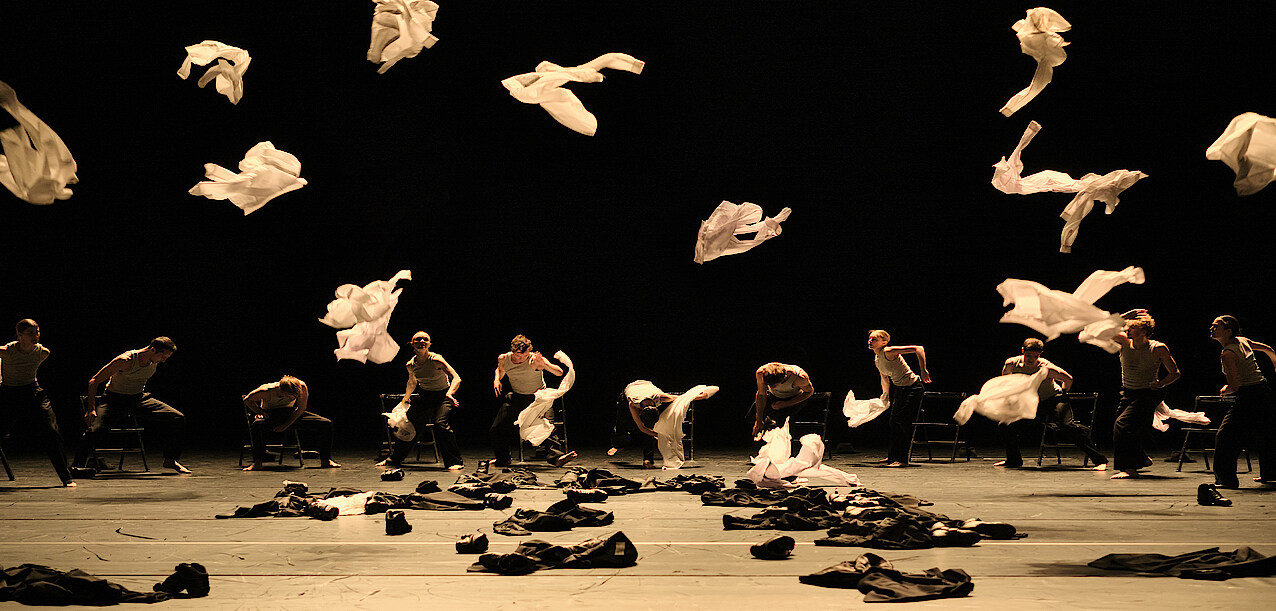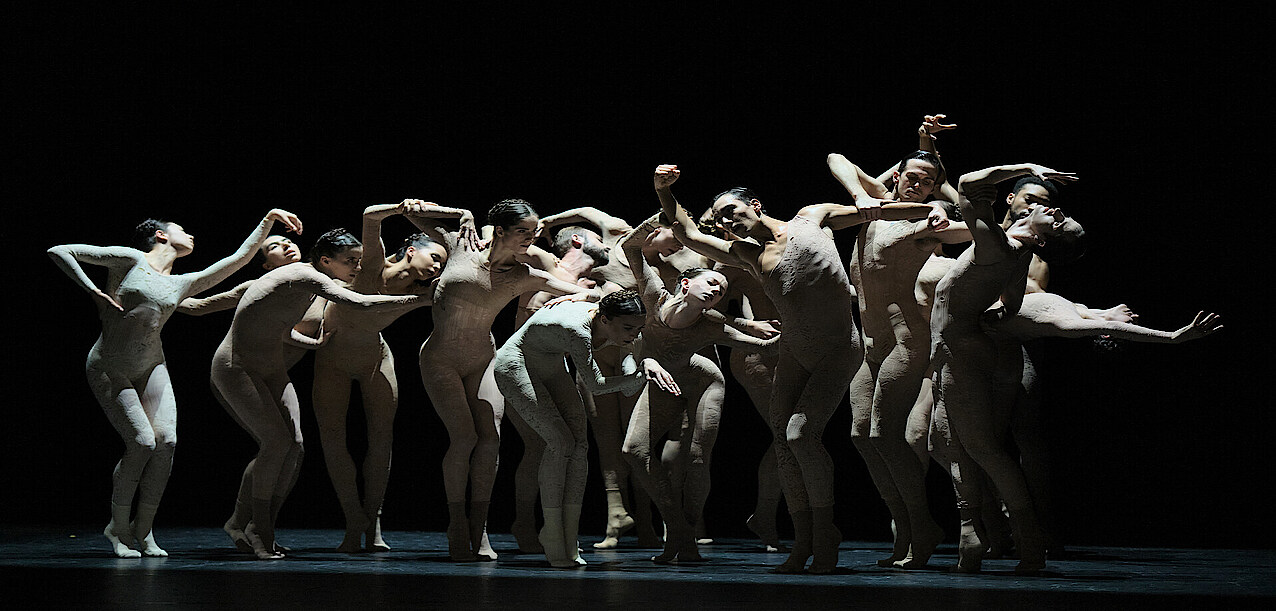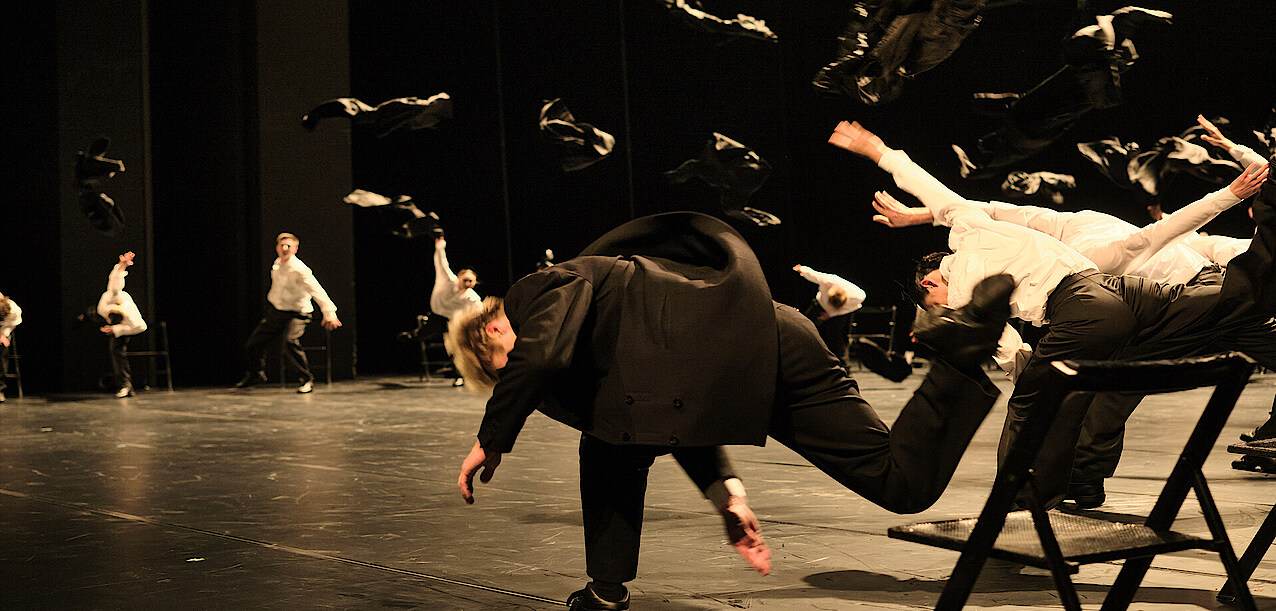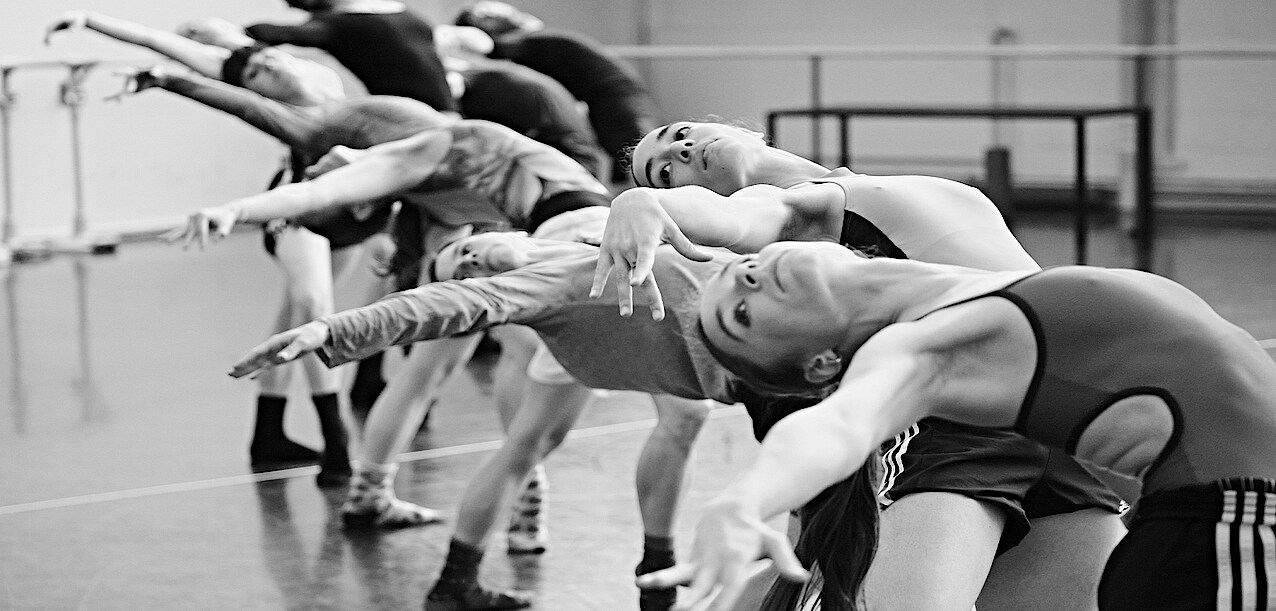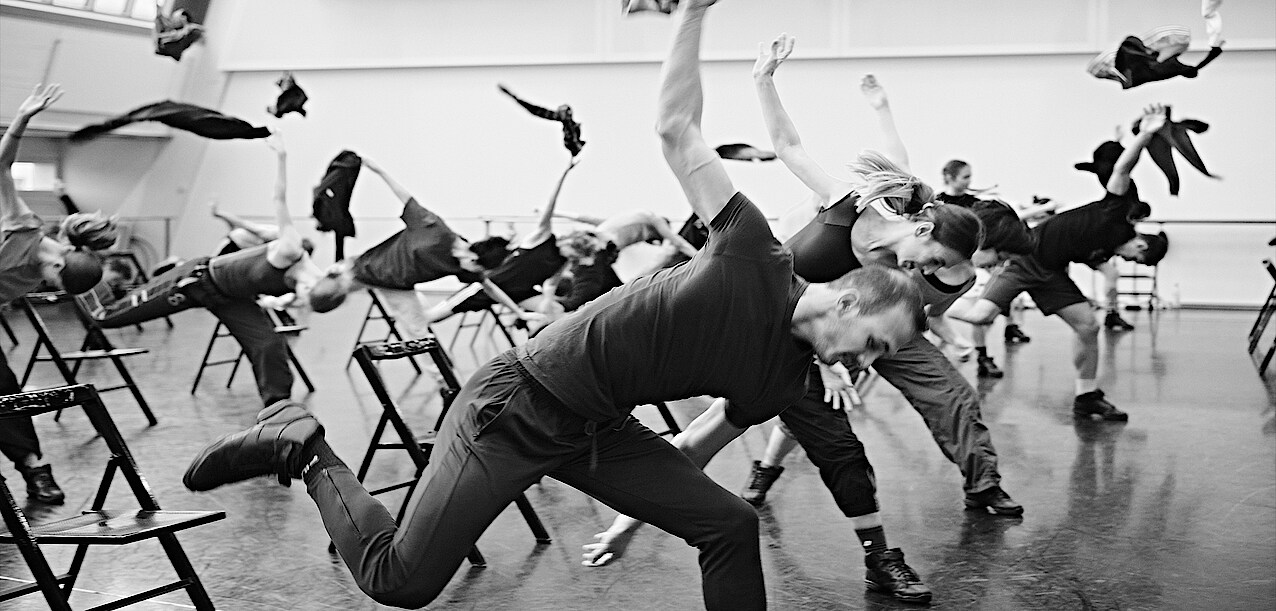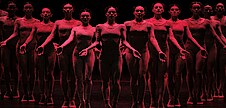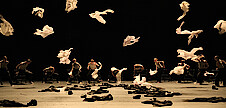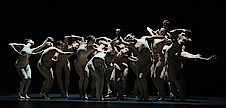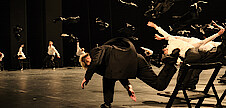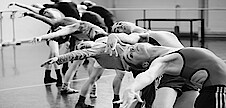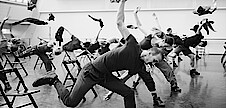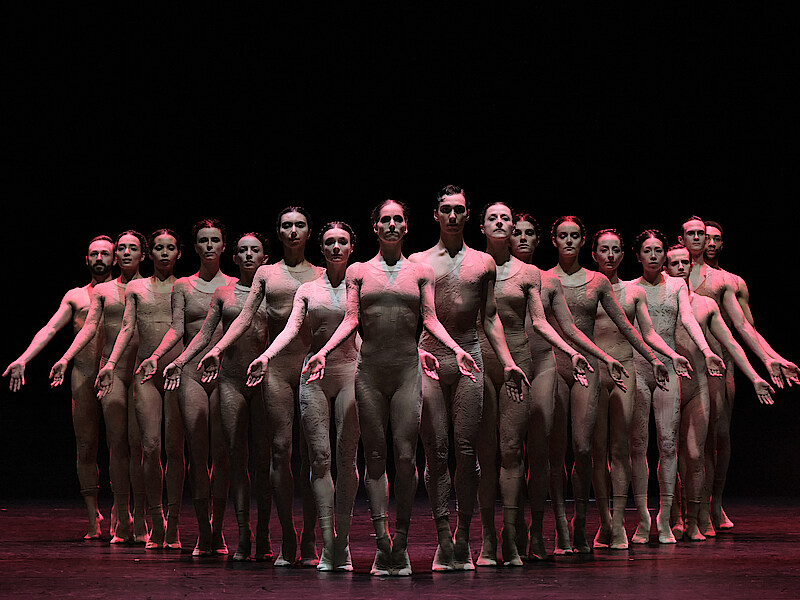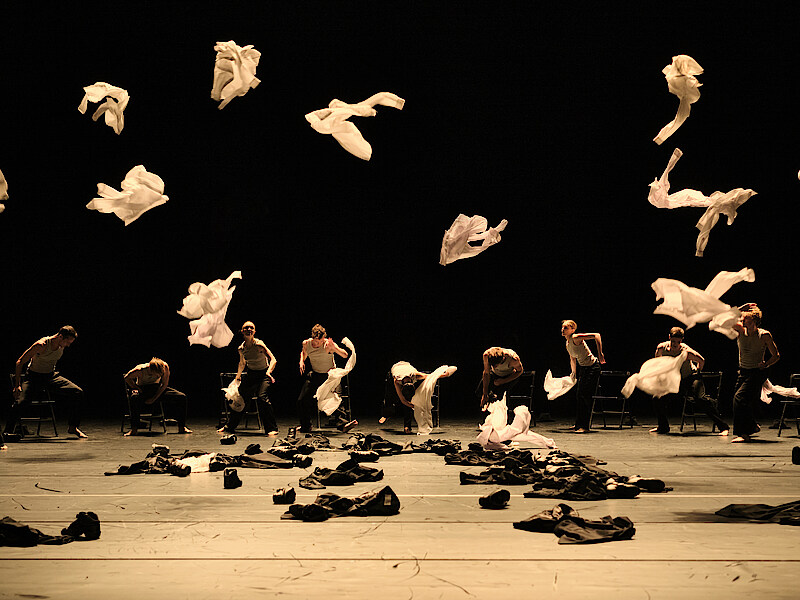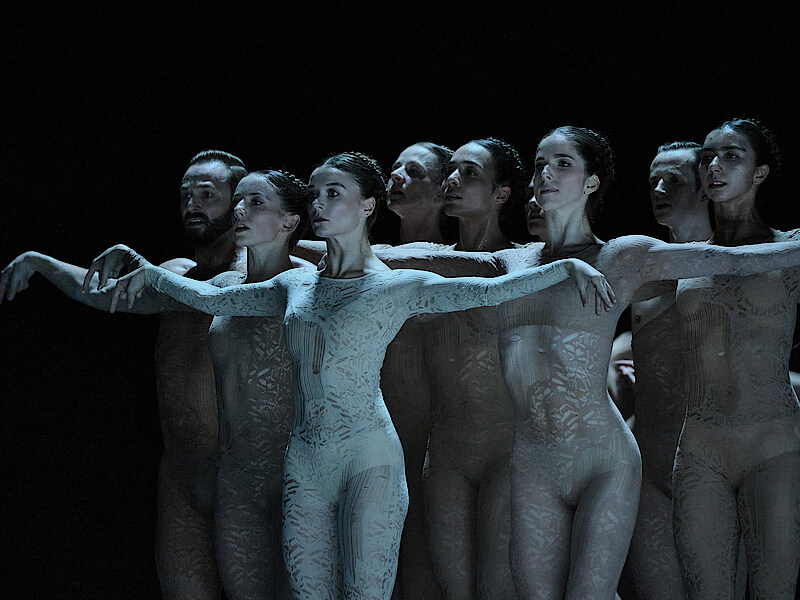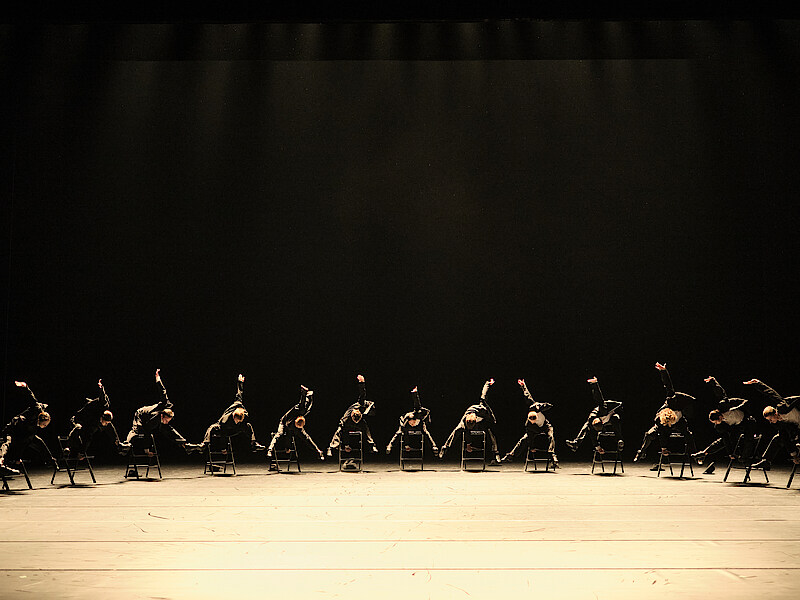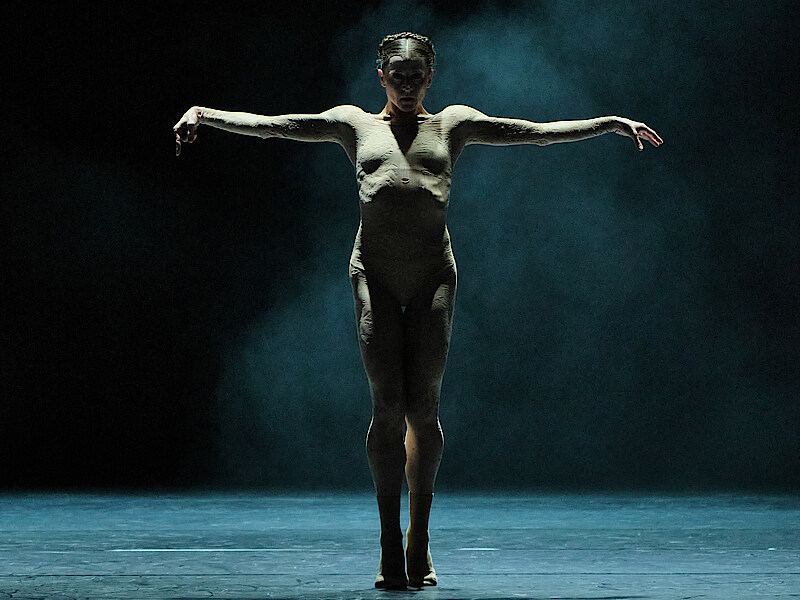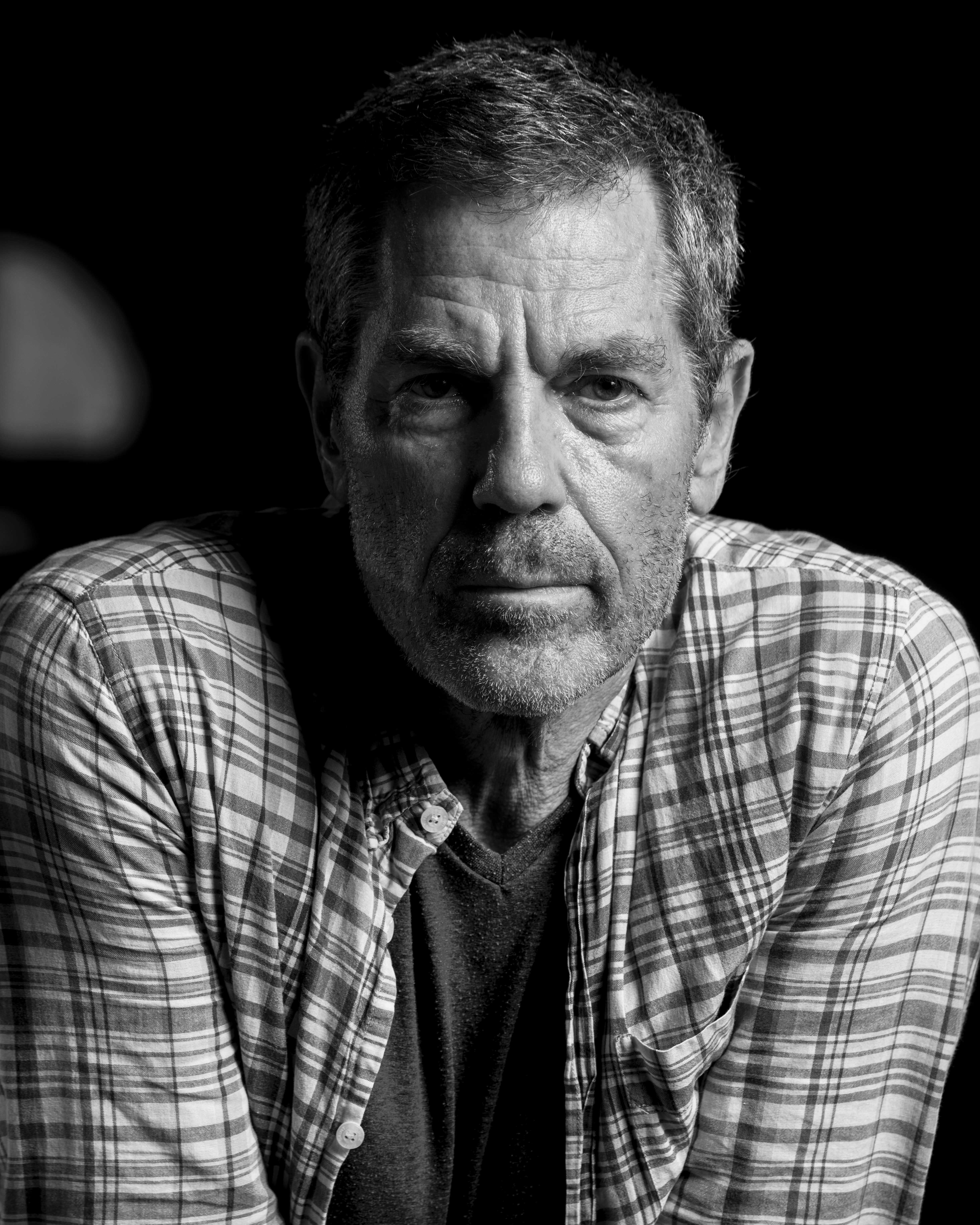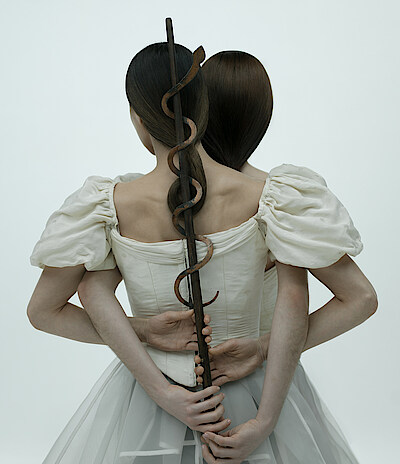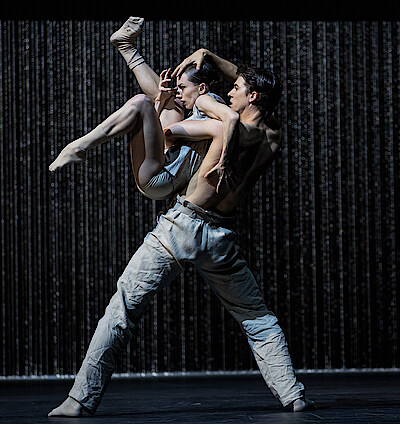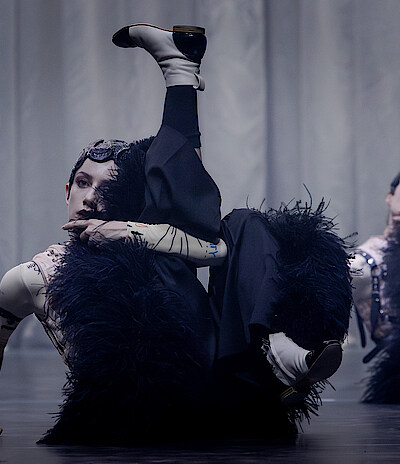
«It’s about essence, not about style»
Ohad Naharin, choreographer of Minus 16, on the language of movement, the power of improvisation – and what Gaga has to do with a good meal
Staatsballett Berlin (SBB) Why did you feel the need to develop your own movement language, and how has your perception of dance changed through the creation of Gaga?
Ohad Naharin (ON) I have the privilege of exploring the “before” and “after” of Gaga every single day. There isn’t a fixed date for the “before”. It’s a continuum of events that together describe a “before” and “after”. I share that with the people I teach or work with. Much of it is about our range of possibilities, about the ability to move beyond what only a moment ago was familiar. Something might initially feel exaggerated, but then that exaggeration becomes part of our repertoire. It doesn’t always have to be about speed or strength – it can be about sensitivity, delicacy, about small or even tiny gestures.
SBB That also seems to describe what happens with Minus 16. It’s never static. The piece was first performed 25 years ago and is constantly evolving. How do you view the work today compared to back then?
ON In some ways, it mirrors my own transformation and growth, as well as that of my friends and colleagues. Much of who we were is still there. We carry a large “package” with us, but inside that package there is also a lot that’s new – and that keeps it fresh. What excites me isn’t the choreography itself, but what the dancers bring to it. What fascinates me most is helping them translate and interpret the work. The choreography is also open to change. That may be one of the reasons I chose choreography in the first place – because it’s an ephemeral art form. It disappears. After a rehearsal, it no longer exists. In the evening we return, and we can easily shift it – hopefully for the better.
SBB One of the pieces of music you use in Minus 16 is the Jewish Passover song Echad Mi Yodea. Are you a spiritual person, or why did you choose this song in particular?
ON I’m drawn to the song because of its structure – the repetition and the accumulation. That’s something I also love in choreography. I enjoy the power of repetition and the effect of musical build-up. That was my first connection to the music. I’m aware of its significance in a Jewish context, but that’s really just a side effect. I don’t expect people to know the song, but they can identify with its structure.
SBB What role does Gaga play in rehearsals and beyond?
ON Gaga helps people discover their own potential. It isn’t about teaching them something new, but about training them to make use of something they already have: connections to their passion, their feelings, their sensitivity. It’s about recognising habits, noticing areas of atrophy in the body, the connection to form in movement, the sense of touch, or the relationship to external elements. These are things every human being possesses. Gaga is not choreography. Dance is not choreography. You don’t need to be a dancer. You can dance in your own room, without music, entirely for yourself. But dance has a lot to do with the quality of movement. You can watch two dancers perform the same choreography – one may bore you, the other may move you to tears. Why is that? That’s exactly what I explore: what sparks strong emotions, sensations, stories? What ignites the power of imagination? In this way, the movement language doesn’t just support the choreography and the dancers – it also supports me.
SBB And what part does improvisation play in this?
ON Improvisation is central to the movement language during rehearsals. More than half of what we do is based on improvisation. But improvising can still have a very clear form. I can improvise an entirely precise ballet step. The idea is that every choreography should retain that fresh quality of improvisation – that the dancers feel as though they are making choices, listening to their instincts, and are fully present in the moment. In the end, it doesn’t matter whether something was improvised or choreographed, because everything is connected to the essence of the movement – the spark that gave rise to that living moment inside the choreography.
SBB Classical ballet uses a very strict vocabulary of steps. Does your movement language also consist of “steps”, or do you approach choreography in another way?
ON I explore the essence of movement, not its style. Ballet is a style. Imagine I’m eating a wonderful meal and deciding whether to eat it with my hands, with chopsticks or with a fork. What interests me is the food itself, not the way I eat it. Of course, the “how” matters too – but what counts most is the essence. That’s why it’s easy for me to work with different styles. I can work with a ballet company, or with people who have never danced before, because we can focus on the fundamentals that connect us: dealing with gravity, the flow of information and energy, the clarity of form, texture, tempo, touch, or the relationship to external elements. It’s also about the ability to laugh at yourself, to recognise and embrace your weaknesses. Whether someone uses a wheelchair or is an Olympic champion – everyone can use this shared language to grow.
The interview was conducted by Michael Hoh.
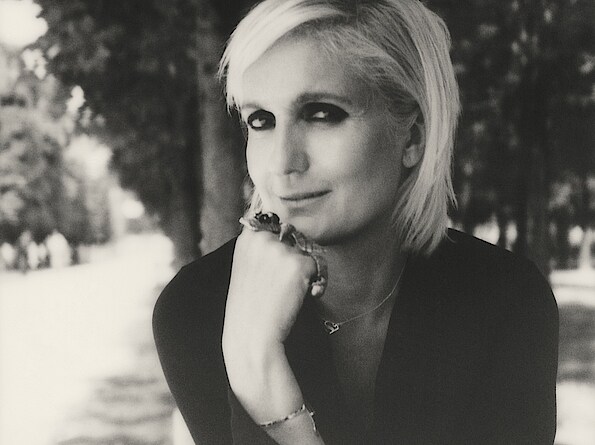
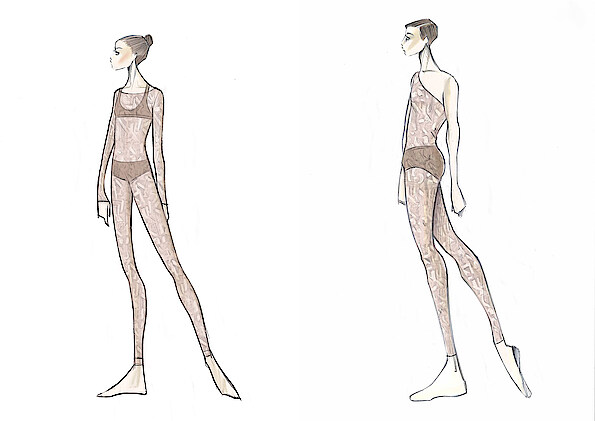
«Mystery and fragility, mature awareness and the ability to dream»
Maria Grazia Chiuri, Creative Director of Women's Collections for Dior
I became acquainted with Sharon Eyal’s work through Carlo Fuortes when he was director of the Rome Opera.
Our collaboration began when I presented my collection dedicated to dance – the Spring-Summer 2019 ready-to-wear collection shown in Paris in September 2018. I am really fascinated by dance—it engages me in all its expressions. It is simultaneously a liberating act and one that demands great discipline.
From the very start, my partnership with Sharon was characterised by our shared views and intentions. From that moment on, we built a rapport of respect and friendship, which has grown over time as we got to know each other. This has led to a genuine, deep bond and has resulted in many other opportunities to work together, both to present some of my collections and for Sharon’s artistic projects. In her poetics there is a deep connection that unites mystery and fragility, mature awareness and the ability to dream. It was the movement between these extremes that drew me in, a movement sharpened through a beauty defined by many layers, many levels, which can become even disturbing, oblique, less pacifying than it is a cause for reflection. A beauty transformed by time and the intensity of emotions.
Just as I do in fashion, Sharon Eyal celebrates the body in all its strength and suppleness, building relationships and creating atmospheres. So for SAABA, Sharon’s project for the Göteborg Opera in Sweden, I designed skintight flesh-coloured jumpsuits, in which the consistency could almost give way and morph into Dior lace, and then into rips, tears, stretches, into an evanescent materiality that reflects the idea of a beauty both delicate and strong, imperfect and therefore poetic.
